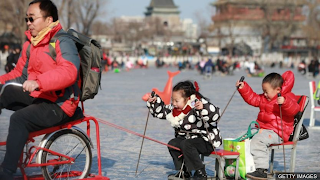Article: How to manage urban growth in Pakistan
Article: How to Manage Urban Growth in Pakistan
Panoramic cityscape of Karachi in Pakistan.
Karachi’s urbanization has had a physical impact on surrounding cities,
creating sprawling and underleveraged agglomerations
Credit: World Bank
Hey Delegates!
I hope everyone is having a great kick-off to the new year. This is Lucia here and I'm excited to share with you all an article our team found that will help color your understanding into one of the areas of our second topic, overpopulation.
You can find the article here.
In brief, this article details the challenges of rapid urban development in the cities of Pakistan and highlights the toll of urban agglomerations on the country's development. Concerns over job growth, prosperity and livability are all key issues that keep economists, politicians and problem-solvers alike, up at night.
To put the extent of Pakistan's rapid urban expansion into perspective, "Pakistan faced an urban housing shortage of approximately 4.4 million units" in 2010. More broadly, the urban population is expected to increase by about "40 million people to an estimated 118 million by 2030", making immediate action to properly manage this continued expansion absolutely critical.
However, while rapid urban development has spurred many concerns for the country's future, it is curiously also the key to the country's transformation (if managed correctly). Researchers aligned with the Pakistan Vision 2025, focus on premium job growth and the implementation of vast public transit networks as crucial pieces of Pakistan's development. Case studies have shown that Pakistan's urban residents have relocated from the traditional city cores of their respective residencies, to more suburban and peri-urban areas of the country with the implementation of vast transit networks, allowing the centers to be vacated to alleviate the previous strain. Public transportation continues to have positive yields on cities in Pakistan as the country explores new travel modes and opportunities.
Take a look at the article yourself and comment down below what your findings and insights are. Also, feel free to take some time to consider these questions as guideposts to your analysis.
1) What other solutions and areas would be most relevant to consider in the case of Pakistan, aside from those listed in the article, that would help better manage the rapid urbanization?
2) What would be your biggest concerns into the urbanization process, and what potential pitfalls can you anticipate as byproducts of any policies to manage this urban growth? How would you address them?



This comment has been removed by the author.
ReplyDeleteAs many developing Asian countries, Malaysia has seen stark growth in population in urban populations over the past few decades. Cities in Asia, especially in South and South- east Asia confront difficult challenges when attempting to establish safe, poverty free and well-managed urban development. Despite their differences, many Asian cities have two common challenges. First, hazardous environmental conditions have arisen as a result of rapid industrialization, rapid urbanization and the growth of vehicle population in the cities combined with the absence of sound land use planning and management. These are seriously damaging the environment in urban areas of Asia— air and water pollution, solid waste management, and transport-related forms of environmental stress by affecting the entire population and creating serious health problems and financial costs associated with bad environment.
ReplyDeleteThe majority of the urban population in Malaysia enjoy a high standard of living with good access to clean water and sanitation facilities. The present structure of state and local government has also helped facilitate the successful implementation and coordination of development projects as well as service provision. For example, the Government launched the Local Agenda 21 program in 1999 in order to strengthen sustainable development activities at the local level. In addition, a Sustainable Urban Development Project was also launched in 1999 in the cities of Kuching and Kota Kinabalu with the main to improve the management of solid wastes, land use and natural resources. Again the present structure of state and local government has helped toward the successful implementation of the SUD project.
Malaysia believes that sustainable development of cities is only possible with good governance, with sound management of a city's social and economic resources. Three aspects are of central importance to achieve this:
1. The need for clear assignment of responsibilities among levels of government, while providing for a range of competitive service providers to help ensure efficiency and citizen choice;
2. Extensive use of information and communications technology to drive down costs and provide for maximum transparency,
3. Incorporation of various approaches to enhance performance and results management of city governments.
Achieving good governance of Asia's cities will require partnerships of government, private sector and civil society. In addressing the challenge of poverty, the traditional instruments used to hold governments accountable, such as audit and legislative oversight, have proved ineffective. The evidence suggests that citizen report cards could be an important instrument to hold public servants accountable and improve the quality of public services. The Public Affairs Centre (PAC), a non-profit organization in Bangalore, India, pioneered the Bangalore Citizen Report Card (CRC) to assess the satisfaction level of citizens with regard to public services in Bangalore and ranked public service agencies (water, power, transport, housing, communications, health care and other municipal services) in terms of their service performance. A survey conducted in 1984 found that level of public satisfaction with the quality and efficiency of public services were low, the public agencies were not responsive to citizens and they lacked customer orientation, corruption was widespread and negatively affected the public service delivery. The second survey was conducted in 1999 and revealed some improvement in public satisfaction with public services.
The Delegation of Malaysia hopes to work with other countries to come up with solution to manage population growth in urban center. If any country would like to learn more about our solutions or work with us, please feel free to contact us during Unmod or email us.
Thank You